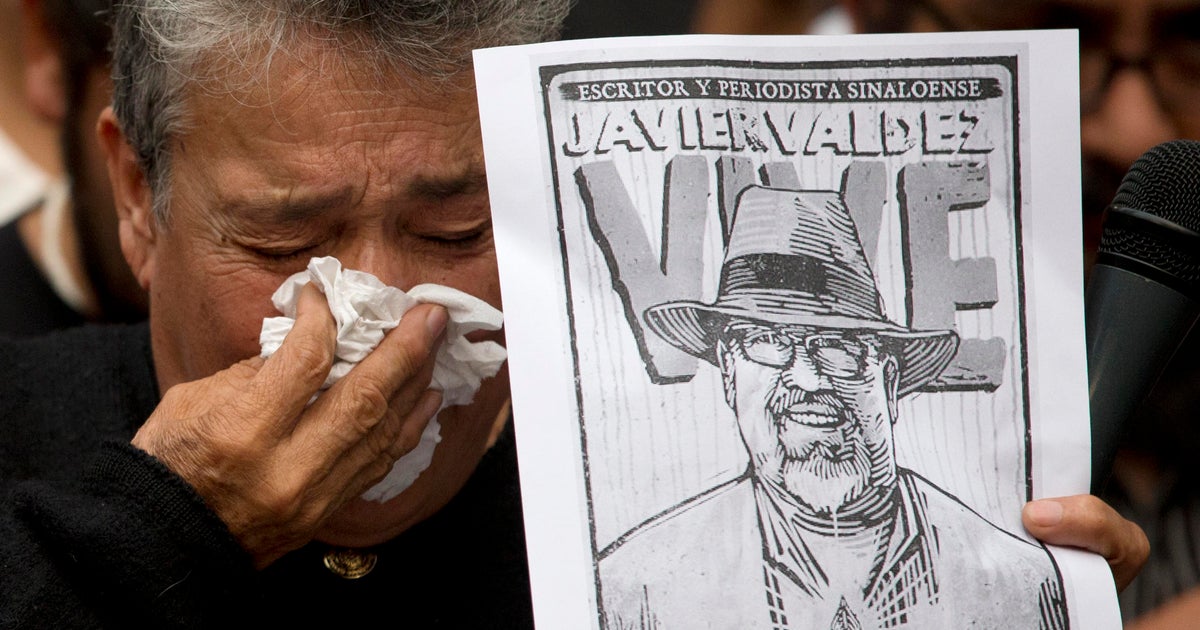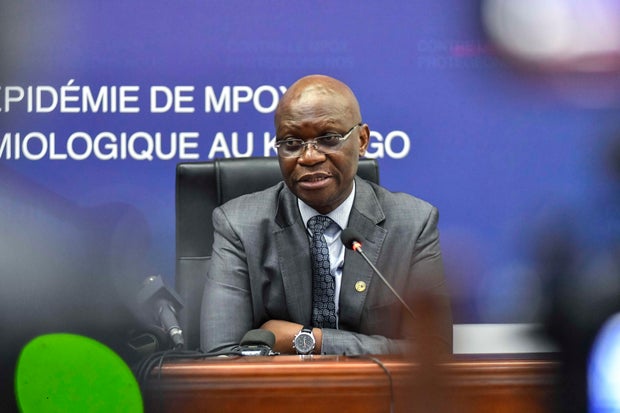CBS News
Supreme Court social media case: Court hears arguments on government ability to urge removal of online content it says spreads misinformation

Washington — The Supreme Court on Monday is hearing arguments in a case that tests how far the federal government can go in pressuring social media companies to remove content it believes spreads misinformation before it crosses a constitutional line.
The case, known as Murthy v. Missouri, arose out of efforts during the early months of the Biden administration to push social media platforms to take down posts that officials said spread falsehoods about the pandemic and the 2020 presidential election.
A U.S. district court judge said White House officials, as well as some federal agencies and their employees, violated the First Amendment’s right to free speech by “coercing” or “significantly encouraging” social media sites’ content-moderation decisions.
The legal battle is one of five that the Supreme Court is considering this term that stand at the intersection of the First Amendment’s free speech protections and social media. But it is the first of two that the justices will hear when they take the bench Monday that involves alleged jawboning, or informal pressure by the government on an intermediary to take certain actions that will suppress speech.
The second case raises whether a New York financial regulator violated the National Rifle Association’s free speech rights when she pressured banks and insurance companies in the state to sever ties with the gun rights group after the 2018 shooting in Parkland, Florida.
Decisions from the Supreme Court in both cases are expected by the end of June.
The Biden administration’s efforts to stop misinformation
The court is hearing arguments first in the case stemming from the Biden administration’s efforts to pressure platforms including Twitter, now known as X, YouTube and Facebook, to take down posts it believed spread falsehoods about the pandemic and about the last presidential election.
Brought by five social media users and two states, Louisiana and Missouri, their challenge claimed their speech was stifled when platforms removed or downgraded their posts after strong-arming by officials in the White House, Centers for Disease Control, FBI and Department of Homeland Security.
The challengers alleged that at the heart of their case is a “massive, sprawling federal ‘Censorship Enterprise,'” through which federal officials communicated with social media platforms with the goal of pressuring them to censor and suppress speech they disfavored.
U.S. District Judge Terry Doughty found that seven groups of Biden administration officials violated the First Amendment because they transformed the platforms’ content-moderation decisions into state action by “coercing” or “significantly encouraging” their activities. He limited the types of communications agencies and their employees could have with the platforms, but included several carve-outs.
The U.S. Court of Appeals for the 5th Circuit then determined that certain White House officials and the FBI violated free speech rights when they coerced and significantly encouraged platforms to suppress content related to COVID-19 vaccines and the election. It narrowed the scope of Doughty’s order but said federal employees could not “coerce or significantly encourage” a platform’s content-moderation decisions.
The justices in October agreed to decide whether the Biden administration impermissibly worked to suppress speech on Facebook, YouTube and X. The high court temporarily paused the lower court’s order limiting Biden administration officials’ contact with social media companies.
In filings with the court, the Biden administration argued that the social media users and states lack legal standing to even bring the case, but said officials must be free “to inform, to persuade, and to criticize.”
“The court imposed unprecedented limits on the ability of the president’s closest aides to speak about matters of public concern, on the FBI’s ability to address threats to the nation’s security, and on CDC’s ability to relay public-health information,” Solicitor General Elizabeth Prelogar, who represents the government before the Supreme Court, said.
She argued that senior Biden administration officials were using the bully pulpit to push social media companies to address false information on their platforms, which has never been a free speech violation. As long as the government is seeking to inform and persuade, and not compel, Prelogar wrote, its speech does not violate the First Amendment.
“Influence is also the natural result of successful efforts to inform, to persuade, or to criticize,” Prelogar wrote. “That the platforms often acted in response to the government’s communications thus does not remotely show that those communications were coercive.”
But state officials behind the challenge told the court that accepting the Justice Department’s argument would make the First Amendment “the easiest right to violate.”
White House officials, they said, frequently coupled private demands for social media companies to remove posts with public references to adverse consequences they could initiate, such as antitrust reforms or changes to the law that protects platforms from civil liability over content posted by third parties.
“By silencing speakers and entire viewpoints across social-media platforms, defendants systematically injure plaintiffs’ ability to participate in free online discourse,” state officials from Louisiana and Missouri wrote.
The NRA’s court fight
In the second case, the court will consider whether the former superintendent of the New York State Department of Financial Services violated the NRA’s free speech rights when she pushed regulated insurance companies and banks to stop doing business with the group.
Superintendent Maria Vullo, who left her post in 2019, had been investigating since 2017 two insurers involved in NRA-endorsed affinity programs, Chubb and Lockton, and determined they violated state insurance law. The investigation found that a third, Lloyd’s of London, underwrote similar unlawful insurance products for the NRA.
Then, after the Parkland shooting in February 2018, Vullo issued guidance letters that urged regulated entities “to continue evaluating and managing their risks, including reputational risks” that may arise from their dealings with the NRA or similar gun rights groups.
Later that year, the Department of Financial Services entered into consent decrees with the three insurance companies it was investigating. As part of the agreements, the insurers admitted they provided some unlawful NRA-supported programs and agreed to stop providing the policies to New York residents.
The NRA then sued the department, alleging that Vullo privately threatened insurers with enforcement action if they continued working with the group and created a system of “informal censorship” that was designed to suppress its speech, in violation of the First Amendment.
A federal district court sided with the NRA, finding that the group sufficiently alleged that Vullo’s actions “could be interpreted as a veiled threat to regulated industries to disassociate with the NRA or risk DFS enforcement action.”
But a federal appeals court disagreed and determined that the guidance letters and a press release couldn’t “reasonably be construed as being unconstitutionally threatening or coercive,” because they “were written in an even-handed, nonthreatening tone” and used words intended to persuade, not intimidate.
The NRA appealed the decision to the Supreme Court, which agreed to consider whether Vullo violated the group’s free speech rights when she urged financial entities to sever their ties with it.
“Allowing unpopular speech to form the basis for adverse regulatory action under the guise of ‘reputational risk,’ as Vullo attempted here, would gut a core pillar of the First Amendment,” the group, which is represented in part by the American Civil Liberties Union, told the court in a filing.
The NRA argued that Vullo “openly targeted the NRA for its political speech and used her extensive regulatory authority over a trillion-dollar industry to pressure the institutions she oversaw into blacklisting the organization.”
“In the main, she succeeded,” the organization wrote. “But in doing so, she violated the First Amendment principle that government regulators cannot abuse their authority to target disfavored speakers for punishment.”
Vullo, though, told the court that the insurance products the NRA was offering its members were unlawful, and noted that the NRA itself signed a consent order with the department after Vullo left office after it found the group was marketing insurance producers without the proper license from the state.
“Accepting the NRA’s arguments would set an exceptionally dangerous precedent,” lawyers for the state wrote in a Supreme Court brief. “The NRA’s arguments would encourage damages suits like this one and deter public officials from enforcing the law — even against entities like the NRA that committed serious violations.”
The NRA, they claimed, is asking the Supreme Court to give it “favored status because it espouses a controversial view,” and the group has never claimed that it was unable to exercise its free speech rights.
CBS News
Accused mastermind of journalist’s murder wanted by Mexico — but U.S. has called him a “protected witness”

Mexico has asked the United States to extradite the suspected mastermind behind the murder of journalist Javier Valdez after he was arrested on drug charges, the attorney general said.
Damaso Lopez Serrano — who the Justice Department says is known as “Mini Lic” — is accused of ordering the 2017 killing of Valdez, an award-winning journalist and AFP contributor who covered the narcotics trade.
The alleged former high-ranking member of the Sinaloa Cartel was arrested on Friday in Virginia on charges of trafficking fentanyl. Lopez Serrano is the son of Damaso Lopez Nunez, who launched a struggle for control of the cartel following the arrest of its leader, Joaquin “El Chapo” Guzman.
Mexico’s Attorney General Alejandro Gertz described Lopez Serrano as the “mastermind” behind Valdez’s murder.
“We have already prosecuted the rest of the perpetrators and they are in jail,” he told a news conference.
Valdez was shot and killed in his car on May 15, 2017 in the Sinaloa state capital of Culiacan near the offices of his weekly newspaper Riodoce.
Enric Marti / AP
Investigators believe Lopez Serrano ordered the hit because he was angry about information published by Valdez about the Sinaloa Cartel’s internal power struggles.
Mexico has made several extradition requests for Lopez Serrano, who surrendered to U.S. authorities in July 2017 for drug trafficking and cooperated in exchange for a reduced sentence. At the time, the U.S. Drug Enforcement Administration said Lopez Serrano was “believed to be the highest-ranking Mexican cartel leader ever to self-surrender in the United States.”
He was released from prison on parole in 2022.
Gertz said that Mexico had asked “on countless occasions” for Lopez Serrano to be handed over, but Washington declined because he had become a “protected witness” and “was giving them a lot of information.”
He voiced hope that with Lopez Serrano’s latest arrest “there are more than enough reasons” for the United States to finally grant Mexico’s request.
Rebecca Blackwell / AP
Wracked by violence related to drug trafficking, Mexico is one of the world’s most dangerous countries for journalists, news advocacy groups say.
Reporters Without Borders says more than 150 newspeople have been killed in Mexico since 1994 — and 2022 was one of the deadliest years ever for journalists in Mexico, with at least 15 killed.
Media workers are regularly targeted in Mexico, often in direct reprisal for their work covering topics like corruption and the country’s notoriously violent drug traffickers.
Most recently, in October, gunmen killed a journalist whose Facebook news page covered the violent western Mexico state of Michoacan. Then less than 24 hours later, an entertainment reporter in the western city of Colima was killed inside a restaurant she owned.
CBS News
2 sisters, 7 years apart in age, also receive heart transplants 7 years apart in Chicago

CHICAGO (CBS) — Two sisters have grateful hearts after they both received heart transplants at the same age—seven years apart.
Younger sister Meredith Everhart and older sister Abbey Cannon are now bonded by a genetic condition and a second chance at life.
“What’s ironic is that when she needed a heart transplant, was exactly the same age I needed a heart transplant,” said Cannon. “Seven years apart in age, seven years apart within 30 days of transplant, and our birthdays are within 30 days.”
The sisters share a special bond of getting a second chance at life, which they both received at the age of 38 years old.
Both sisters suffer from hypertrophic cardiomyopathy—otherwise known as HCM.
The genetic condition is a form of heart disease that causes the heart muscle to thicken.
In 2012, Cannon had chest pain. She was misdiagnosed in Nashville, Tennessee, and got a second opinion at Northwestern Medicine in 2016.
“Within six months, I was inpatient on an aortic balloon pump waiting for a heart,” Cannon said. “I ended up getting my heart 32 days later, So my date is February 27, 2017.”
Just months after Cannon’s transplant, Everhart was diagnosed with HCM too. She tried medication and participated in clinical trials, but her condition kept getting worse.”
“For me, it was, she’s right—I was in denial for a long time,” said Everhart, “and I didn’t want to be sick. I was in my 20s. I was in my early 30’s. I was like, this is not happening. I saw how bad she suffered.”
In May 2022, Everhart got COVID-19, and it sent her into heart failure.
She was added to the transplant list one year later.
“I got the call on January 29 of this year, 2024, and it’s been a journey,” Everhart said. “It’s been fantastic though. Northwestern has been great.”
Cannon said she can’t stress enough how important it is to become an organ donor.
“Had we not had someone that gave that most selfless gift, neither of us would be here,” she said.
CBS News
Congo says mystery disease behind dozens of deaths of women and children finally identified as severe malaria

Johannesburg — For weeks it was dubbed simply “Disease X.” But the mysterious flu-like disease that has killed more than 143 people — mainly women and young children — in the Democratic Republic of Congo has finally been identified.
“The mystery has finally been solved,” Congo’s health ministry declared in a statement on Tuesday. “It’s a case of severe malaria in the form of a respiratory illness.”
The health agency said malnutrition in the hardest-hit region had weakened the local population’s immunity, leaving them more vulnerable to the disease. People who contracted the malaria infection have exhibited symptoms including headache, fever, cough and body ache.
The Congo’s health minister had told journalists the country was on “maximum alert” over the spread of the previously unidentified disease, and health officials told CBS News in early December that the remoteness of the epicenter of the outbreak and lack of a diagnosis made it difficult to launch a concerted response.
Samy Ntumba Shambuyi/AP
At least 592 cases were reported after the alert was first raised by Congo’s health ministry on Oct. 29. The ministry said the disease had a fatality rate of 6.25%. More than half of the deaths recorded were children younger than five who were severely malnourished when they contracted the disease, according to the World Health Organization.
At a press briefing on Dec. 10, WHO Director-General Tedros Adhanom Ghebreyesus said 10 out of 12 samples from patients suffering from the mysterious disease had tested positive for malaria, but he said they were still testing at the time for other diseases.
The Congolese government had sent a rapid intervention team to the Kwango province, 435 miles southeast of capital city Kinshasa, consisting of epidemiologists and other medical experts. Their objective was to identify the disease and mount a suitable response. Government officials had earlier warned locals to avoid touching people infected with the illness or the bodies of those who had died.
Congo has suffered from many disease outbreaks in recent years, including typhoid, malaria and anemia. The country has also grappled with an mpox outbreak, with more than 47,000 suspected cases and over 1,000 suspected deaths from the disease, according to the WHO.
Anti-malaria medicine provided by the WHO was being distributed at local health centers in Congo, and WHO officials said more medical supplies were due to arrive in the country Wednesday.
It’s the rainy season in Congo, which often sees a rise in malaria cases, and will certainly complicate treating those most at risk.











